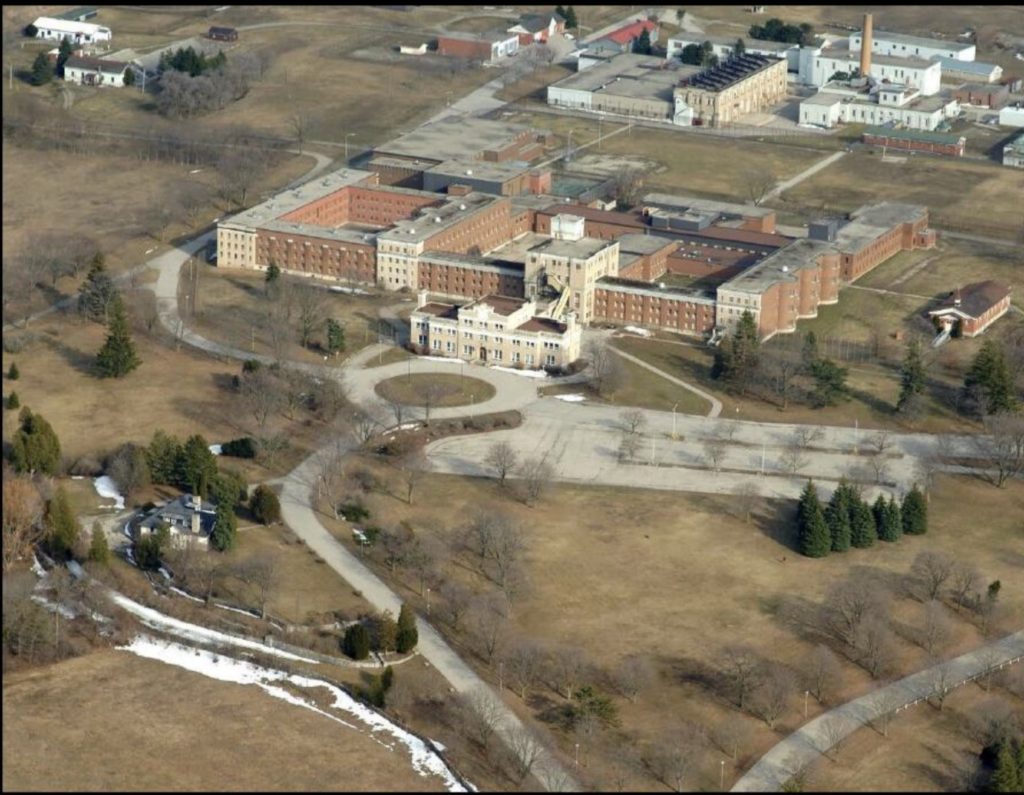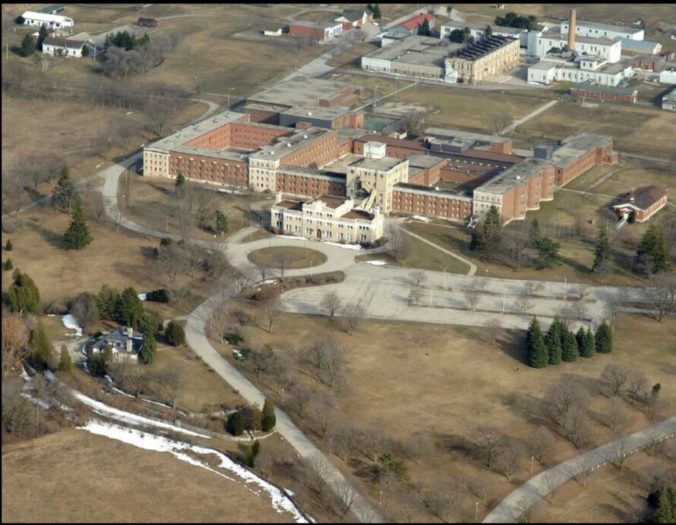
It’s a great day in east #Guelph!
Today I had the distinct privilege of attending the Grand Opening of the new Ethnic Supermarket location at York & Victoria Rd. It was a pleasure meeting store owner Lin Qing Qing and his staff as we toured the fully renovated store. This is Ethnic Supermarket’s latest grocery outlet in a growing chain of stores in southern Ontario (Milton, Windsor and now Guelph). The store is truly welcomed in East Guelph and I’m happy to report that it exceeds all expectations. I know the community will join me in supporting this much needed grocery amenity.
Fresh food from around the world as well as traditional North American fare.
✅ 47,000sq/ft
✅ 80 local jobs
✅ <4km from anywhere in the east end.
Welcome to #Guelph!







As part of the 2021 Budget Council I was pleased to receive unanimous support on a motion to implement On-Demand Bus Services to the Hanlon Creek Business Park and Guelph’s Community Bus Service. This motion was in response to the identified desire for transit services in this developing employment area; however, the financial reality of traditional transit was significantly constrained based on predicted ridership. Well the early returns are in from staff and I’m happy to pass along some good news.

An Update from Staff…………How’s it going so far!
We are offering two service streams: Hanlon on-demand (servicing the Hanlon Business Park and Hanlon Creek Business Park) and surrounding neighbourhoods), and Community on-demand (servicing popular destination points in Guelph).
Every day, more and more people are discovering and using on-demand, and we are monitoring our ridership numbers daily. We will report on the program’s outcomes later this year. In the meantime, a few highlights:
Community on-demand
- Community on-demand is up by 189.29 per cent since May 2
- 346 trips taken, between May 2 and June 16
- 15,900 less kilometres driven compared to the same number of days when we offered a set schedule (Community Bus). This diverts 1.42 tonnes of C02 emissions from the atmosphere, and lowers fuel and maintenance costs.
Hanlon on-demand
- Hanlon on-demand is up by 14.66 per cent since May 2
- 4,555 trips taken, between May 2 and June 16
- 22,756 less kilometres driven compared to the same number of days when we offered a set schedule (Route 16 Southgate). This diverts 2.03 tonnes of C02 emissions from the atmosphere, and lowers fuel and maintenance costs.
- Providing transit service to the Hanlon Creek Business Park, an area not serviced before on-demand.
Be My Guest – try our On-Demand Service!
Have you tried Guelph Transit’s new on-demand bus service? We invite you to download the free ‘On-demand your way’ app on your smartphone and book a ride with us!
Here’s how:
- Download the ‘On-demand your way’ app from either the App Store or Google Play
- You can also visit book.ondemandyourway.com
Need help? Call 519-822-1811, prompt 5 to speak to one of our friendly, helpful booking agents.
And we would love for you to share your experience with others by posting about it on your social media channels, tagging @GuelphTransit and using the hashtag #OnDemandYourWay
How it got started……..
As many will remember, in 2017 Council introduced a new 10 year, 1% compounding infrastructure tax to help pay for ageing infrastructure replacement in the City. This tax will equate to close to $30M in additional taxation collected annually (on top of property tax increases) by 2027.
At the time council committed that “this levy ensures funds are allocated to the City’s infrastructure replacement needs, and are not used to fund operating costs; and that council will have the opportunity to deliberate and approve this increase on an annual basis.”
Four short years later…………
How it’s going………
1) In 2017/18 Council voted to divide up the new 1% tax revenue (intended for replacing infrastructure), to also pay for NEW projects associated with City growth.
2) In 2018/2019 Council voted to stop deliberating and approving the infrastructure tax increase each year, opting to simply embed the increase into the base budget.
3) In 2021, council has now voted to use more of the 1% infrastructure tax to convert up to 50 contract positions into new full time salaried positions at City Hall.
My comments last night on how this file has been handled to date (excuse the audio).
785 York Road (Ontario Reformatory) Notice of Intention to Designate
Questions and answers
- Who currently owns the Reformatory Lands?
The legal owner of the Reformatory Lands at 785 York Road is the Province of Ontario through Infrastructure Ontario, on behalf of the Ministry of Government and Consumer Services. - What is the City’s involvement/role with the future land sale (if any)?
The property owner requested that Guelph City Council protect the property through designation under section 29, Part IV of the Ontario Heritage Act before the property is put up for sale. - How does the proposed cultural heritage designation align with the Guelph Innovation District Secondary Plan and future plans for the land (such as the Yorklands Green Hub)?
The staff recommendation implements the Council-approved policy framework for the conservation of cultural heritage resources within the Guelph Innovation District (GID) Secondary Plan area including conservation of the Ontario Reformatory complex. Objectives of the secondary plan aim to ensure significant built heritage resources and significant cultural heritage landscapes are conserved.
The Official Plan land use designation of the former Ontario Reformatory property (785 York Rd) is Adaptive Re-use. This land use designation includes provincially significant cultural heritage resources where the conservation, rehabilitation, restoration, maintenance and re-use of built heritage resources and cultural heritage landscapes will serve as the focal point of new development.
The Yorklands Green Hub, and the recently formed Coalition for Protection of the Ontario Reformatory, are seeking protection of the property for future public enjoyment of its unique parkland. They are also seeking “key parts of the Ontario Reformatory lands to be preserved as a rare treasure – a large urban green space accessible to the public, to be protected in perpetuity for current and future generations and shared use”.
Staff’s recommendation seeks to support this vision by protecting the cultural heritage landscape and heritage attributes of that landscape (see Q.4) however, staff have no legislative authority to require that the land be held in public ownership or to require a future owner to allow access to the public in the future. - What buildings, landscapes and features is the City recommending for protection through designation?
The designation would apply to the entire property at 785 York Road, known as the Guelph Correctional Centre or the former Ontario Reformatory, and sets out the following heritage attributes for protection:
– 58 hectares of the property recognized as a cultural heritage landscape
and as a property of provincial significance
– 12 buildings, including the administration building, the superintendent’s
residence, Willowbank Hall, detention complex, machine shop and
greenhouse
– Ornamental grounds including stone walls, fences, stairs, gates and
gateposts along York Road, terraced gardens, the ponds, bridges,
waterways and mature trees planted along roads
– Circulation patterns on the property
– Open areas and clear sight lines around the main detention complex
– Interior attributes of the administration building, main detention complex
and superintendent’s residence
The following features are being recommended for listing on the Municipal register of cultural heritage properties:
– Reformatory quarry area within 110 Dunlop Drive
– Reformatory wooden trestle railway bridge on the Eramosa River, north of
Stone Road East
– G. M. Frost Centre located at 328 Victoria Road North (Note: this building
is not associated with the Ontario Reformatory, it is the Turfgrass Institute)
Further details are included in Attachment 4 to the staff report. - Is there a cost associated with designation under Part IV?
Staff’s recommendation for designation under Part IV of the Ontario Heritage Act has costs associated with publication of the notice and, should Council pass a bylaw to designation the property, there are costs associated with registering the bylaw against the property on title. These are minimal costs. - Why is the City pursuing a Part IV designation and not a Part V designation, to create a heritage conservation district, under the Heritage Act?
Individual property designation under Part IV of the Heritage Act, coupled with a heritage conservation easement agreement, provides a higher level of protection for the heritage of the Reformatory Lands than a Part V heritage conservation district because the easement agreement contractually commits property owners to protect the defined heritage attributes of the property in perpetuity. Staff are recommending that 785 York Road be designated under section 29, Part IV of the Ontario Heritage Act with a conservation easement agreement to be entered into with future property owner(s). This recommendation respects the landowner’s request, implements Council’s approved Guelph Innovation District (GID) Secondary Plan policies for the conservation of cultural heritage resources, provides for the designation and protection of individual heritage attributes and features and can be quickly implemented. Additional context Part IV applies to an individual property with a designation bylaw that would list the attributes and features of the property to be protected. This may include buildings, grouping of buildings, structures, natural features, cultural landscapes or landscape features, ruins, archaeological resources, etc. The bylaw sets out the description of the property and the features to be protected. A heritage permit is required when change is proposed to the property to a designated attribute or feature. Part V applies to larger areas and may be an area with a group or complex of buildings or a larger area with many buildings and properties. This process involves a study to determine the heritage conservation district boundary and requires a plan and guidelines to manage change on the site. Individual buildings and features are not protected in their own right within a Heritage Conservation District, rather the character of the area is established and guidelines are set to protect the cultural heritage value of the district as a whole. Heritage permits may be required when change is proposed within the district, with specific requirements for permits set out in the heritage conservation district plan.
- Is there a cost associated with designation of a Heritage Conservation District under Part V and how long would it take?
A heritage conservation district study takes 2-4 years to complete, requires staff resources to project manage a consulting team and would require a budget of approximately $150,000 to $200,000. - Would the Guelph Innovation District Secondary Plan need to be amended if Part V study were to be undertaken?
Yes, at minimum, the policies that outline requirements for Block Plans should be updated for Block Plan Area 4 to indicate the requirement for a heritage conservation district study to be completed prior to or in conjunction with the block plan process. The secondary plan did not contemplate a heritage conservation district as the means for conservation of Reformatory.
A heritage conservation district study duplicates the following study requirements for Block Plans:
– Evaluation of cultural heritage resources and methods of conservation; – Architecturaldesigncontrols;
– General location of public views and vistas;
– Conformity with the built form and site development policies of the GID Secondary Plan and the urban design policies of the Official Plan through the development of design guidelines for the area.
- Why is the municipality being asked to designate the property? Couldn’t the Minister do this?
Provincial Heritage Property of Provincial Significance, like the Reformatory Lands, are not subject to heritage designation by municipalities or the Minister. While the Province still owns the property, the level of protection for the property’s heritage attributes of Provincial significance is under the approval authority of the Ministry of Heritage, Sport, Tourism and Culture Industries. Once the property leaves Provincial ownership, City Council may take over that authority and responsibility for conservation of the property through a Part IV designation bylaw. Once designated, the conservation of the cultural heritage landscape (CHL) and the property’s heritage attributes would be controlled by the heritage permit process and the heritage conservation easement agreement (HCEA). Designation under Part IV and the establishment of a HCEA are meant to take the place of the current provincially held Part III status under applicable law.
Additional Context
The cultural heritage landscape (CHL) of Provincial significance at 785 York Road and the heritage attributes within that CHL were recognized by the Ministry of Infrastructure (MOI) as a Provincial Heritage Property of Provincial Significance (PHPPS) under Part III.1 of the Ontario Heritage Act in June 2008.
In accordance with the Ontario Heritage Act, Part III.1, the Ministry of Tourism and Culture Standards & Guidelines for Conservation of Provincial Heritage Properties (July, 2010) apply to the conservation of provincial heritage properties such as the former Ontario Reformatory.
These Standards and Guidelines apply to properties the Government of Ontario owns or controls that have cultural heritage value or interest— provincial heritage properties. These standards and guidelines set out the criteria and process for identifying provincial heritage properties and set the standards for their protection, maintenance, use and disposal.
The standards and guidelines for disposal of provincial property require that:
“If a provincial heritage property is to leave provincial control, use best efforts to the extent possible in law to ensure the ongoing, legally binding protection of the property’s cultural heritage value (such as designation under Part IV of the Act, heritage conservation easement, etc.) in any sale or other disposal agreement. The level of protection should be appropriate to the cultural heritage value of the property.” - In the report you mention these designations are just “the first step and not the final form of conservation” for the Ontario Reformatory cultural heritage landscape. What further conservation measures are being considered?
Designation of the property under Part IV as a property of cultural heritage value or interest is a strong step which protects the heritage attributes of the property including the landscape features. The designation would be registered on title and remain with the property regardless of ownership.
The Guelph Innovation District Secondary Plan provides a policy framework to conserve the cultural heritage resources and requires further study through the Block Plan process. The Block Plan requires detailed study to be completed prior to any development applications being considered for the property. These studies include a Cultural Heritage Resource Evaluation Report, a conservation plan, as well as design guidelines. The Block Plan may identify additional cultural heritage attributes to be protected on the site.
Following Council approval of a Block Plan, development proponents would need to prepare a Cultural Heritage Resource Impact Assessment as part of a complete application. If the property is designated, heritage permits would also be required to be approved prior to any development that may alter or impact any of the protected heritage features and attributes on the site.
Also, a Part V, Heritage Conservation District study and plan could be considered in the future through the Block Plan process or as a recommendation of the Block Plan. Properties that are designated under Part IV as a property of cultural heritage value or interest may be included within an area designated as a heritage conservation district.
Further information is provided in Attachment 9 to the staff report. - Does a Part V Heritage Conservation District mean that the property
will be in public ownership?
No, there is no legislative means to require that a property be retained in public ownership. - Would a Part V Heritage Conservation District provide more protection than a Part IV designation?
No, a Part V designation does not provide greater protection. Typically, Part IV designation is used for individual properties and Part V is used for larger areas with more than one property.
The staff recommendation for Part IV designation combined with a heritage conservation easement provides a higher level of protection because the easement agreement contractually commits property owners to protect the defined heritage attributes on the property in perpetuity.

- What are the steps in the process to designate a Heritage Conservation District?
The following are the steps in the process to designate an HCD:
The Study Phase
Step 1 – Request to designate
Step 2 – Consultation with the Municipal Heritage Committee Step 3 – The Area Study and Interim Control
Step 4 – Determination of cultural heritage value or interest and identification of heritage attributes
Step 5 – Delineation of boundary of an HCD
Step 6 – Public consultation
The Implementation Phase
Step 1 – Preparation of the HCD plan and guidelines
Step 2 – Passing the designation bylaw and adoption of the HCD plan Step 3 – Registration of bylaw on title
Step 4 – Proposed changes to existing bylaws and Official Plan provisions Step 5 – Implementing the HCD plan - What are the steps in designating a property under Section 29, Part IV?
There are seven steps to designating an individual property under section 29 of the Ontario Heritage Act. These include:
– Identifying the property as a candidate for designation;
– Researching and evaluating the property;
– Serving a notice of intention to designate, with an opportunity for
objection;
– Passing the designation bylaw;
– Appeals and coming into force;
– Listing the property on the municipal register; and
– Including property on the Ontario Heritage Trust register.
My thoughts on setting realistic intensification targets for Guelph over the next 30 years.
On Monday April 12, 2021 City Council held a Parking Workshop specific to the ongoing Zoning Bylaw review in Guelph. At this meeting, I once again laid out the case for expanding the current 3.5m maximum driveway width for Semi-Detached and Townhome dwellings in #Guelph. See Videos Below.

As many are aware, Guelph council is in the midst of planning the 2021 City Budget. And after spending the past few weeks digesting all of the information, as well as public input, I’d like to offer some thoughts on what an appropriate and responsible 2021 Guelph City Budget might look like.
In May of this year I wrote about the City’s commitment over the past six years to “save in the good times“, and how this commitment has set the City on a firm foundation to respond to the COVID public health and economic crisis (Link Here). I wrote about the city’s tax rate stabilization reserve being completely rebuilt since 2014 ($2.1M, to a projected balance of over $13M in 2020); and the city’s total contingency reserves being rebuilt from $10.8M (2014), to a projected balance of over $23.4M (2020).
So as a follow up to this article, I’d like to offer a second (equally important) piece to the equation. “Save in the good times…………in order to stimulate in the bad.” Since the 1930’s this has become a core function of Government (stimulate during recessions), in order to cushion economic impacts and excelerate recovery; and this function is something Guelph is well situated to perform.
Armed with healthy reserves, Council must focus on responding to the thousands in our community who are still out of work; have returned only part time; have lost a business; or, are facing another round of income insecurity this winter. To achieve this, one thing is clear. Council must work harder to minimize the tax increase in 2021 (currently projected to be 3.6%), all while committing to targeted and immediate reserve funding of community supports to promote resiliency and recovery. Community Grants, Arts and Tourism, Youth Sports, Care Facilities, Welcoming Streets Initiatives, Small Business Tax Reductions (just to name a few), all need to be supported in 2021. And because of our collective success in rebuilding reserves, we can do this. All while acknowledging the impact this pandemic has had on Guelph households and small businesses by minimizing the tax increase. These adjustments (funding through reserves) are no different then what every household in our community is having to do this year.
Further, through this strategy, council will be modelling a similar approach to the provincial and federal government‘s pandemic relief and recovery initiatives (i.e. payroll support, rent relief etc), by focussing on immediate funding needs while keeping an eye on recovery.
City Council, City staff and the executive team have done diligent work over the past six years putting us in the financial position we are in today. Now it’s time to provide targeted support in 2021, which includes minimizing a property tax increase.



